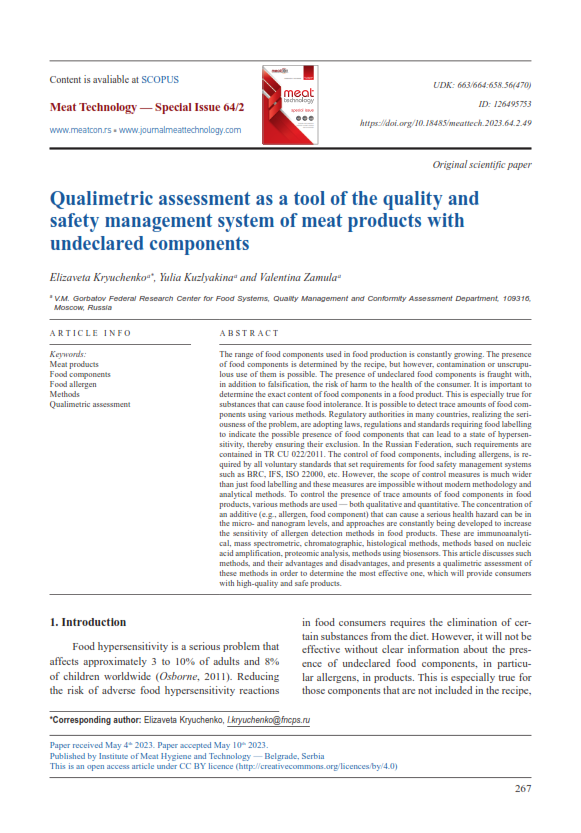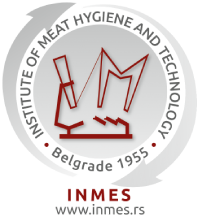Qualimetric assessment as a tool of the quality and safety management system of meat products with undeclared components
Abstract
The range of food components used in food production is constantly growing. The presence of food components is determined by the recipe, but however, contamination or unscrupulous use of them is possible. The presence of undeclared food components is fraught with, in addition to falsification, the risk of harm to the health of the consumer. It is important to determine the exact content of food components in a food product. This is especially true for substances that can cause food intolerance. It is possible to detect trace amounts of food components using various methods. Regulatory authorities in many countries, realizing the seriousness of the problem, are adopting laws, regulations and standards requiring food labelling to indicate the possible presence of food components that can lead to a state of hypersensitivity, thereby ensuring their exclusion. In the Russian Federation, such requirements are contained in TR CU 022/2011. The control of food components, including allergens, is required by all voluntary standards that set requirements for food safety management systems such as BRC, IFS, ISO 22000, etc. However, the scope of control measures is much wider than just food labelling and these measures are impossible without modern methodology and analytical methods. To control the presence of trace amounts of food components in food products, various methods are used - both qualitative and quantitative. The concentration of an additive (e.g., allergen, food component) that can cause a serious health hazard can be in the micro- and nanogram levels, and approaches are constantly being developed to increase the sensitivity of allergen detection methods in food products. These are immunoanalytical, mass spectrometric, chromatographic, histological methods, methods based on nucleic acid amplification, proteomic analysis, methods using biosensors. This article discusses such methods, and their advantages and disadvantages, and presents a qualimetric assessment of these methods in order to determine the most effective one, which will provide consumers with high-quality and safe products.





